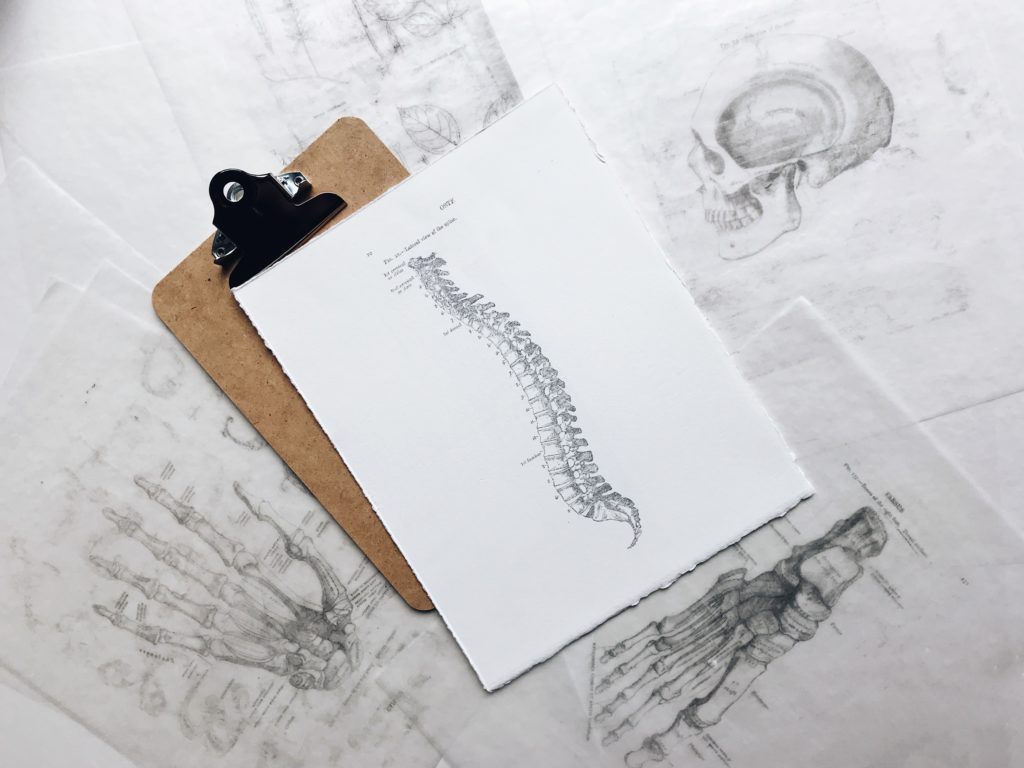Osteopathy consultations are suitable for everyone, from infants to the elderly, including pregnant women and high-level athletes. The session begins with a guided interview conducted by me, accompanied by a series of tests. If I detect a major contraindication, such as a paralytic disc herniation or a pneumothorax, I will terminate the consultation, which will not be billed, and refer you to your primary care physician or a specialist.

When to consult?
Osteopathy can be sought in urgent situations or preventively, typically 2 to 3 times per year, to optimize the adult body’s mobility and help restore physiological balance.
Mandibular disorders: swallowing or chewing difficulties, jaw misalignment during speech, jaw pain, often in conjunction with orthodontic treatment.
Musculoskeletal disorders: muscular pain (low back pain, stiff neck, tendinitis), joint pain (sprains, cervical pain, dorsal pain, lumbar pain, pubalgia, costal pain, coccyx pain, joint pain…), or any pain following a significant trauma (falls, car accidents, whiplash).
Post-surgical disorders: support for individuals who have undergone surgery (e.g., hip prosthesis, knee ligament reconstruction, post-breast implant…).
Digestive disorders: abdominal pain, acid reflux, bloating, constipation, irritable bowel syndrome.
Urogenital disorders: painful periods, endometriosis, fertility issues, and support during assisted reproductive treatments.
Neurological disorders: sciatica, cruralgia, cervical-brachial neuralgia, Arnold’s neuralgia, facial neuralgia, intercostal neuralgia, various neuropathies.
ENT and respiratory disorders: chronic sinusitis, vertigo, tinnitus, headaches, migraines.
Neurovegetative disorders: sleep disturbances, anxiety, stress, depressive states, irritability.
The bodies of children and adolescents are subjected to significant stresses due to growth, falls, carrying backpacks, and poor posture. Osteopathic care can help support healthy development and relieve discomfort.
Growth-related disorders: Scheuermann’s disease, Sever’s disease, Osgood-Schlatter disease, Legg-Calvé-Perthes disease, postural scoliosis, scoliosis.
Musculoskeletal disorders: back pain, sprains, neck pain, dorsal pain, lumbar pain, joint pain.
ENT and cranial disorders: ear infections, sinusitis, conjunctivitis, dizziness, headaches.
Mandibular disorders: difficulties with swallowing or chewing, speech disorders, jaw pain, mandibular prognathism, often alongside orthodontic treatment.
Digestive disorders: abdominal pain, acid reflux, bloating, constipation.
General disorders: developmental delays, sleep disturbances, stress.
Osteopathy can be used preventively and curatively to support athletes in improving performance and recovery.
-
Preparation for sports events and performance enhancement
-
Musculoskeletal disorders: joint pain, muscle pain, post-traumatic or post-surgical care, tendinitis
-
Digestive disorders
-
Stress and fatigue management
-
Sports recovery
My consultation begins with a thorough assessment to determine if there are any contraindications, such as high blood pressure, certain neurological symptoms, risk of preterm labor (PROM), frequent contractions (more than 10 per day), bleeding, placental abruption, placenta previa, etc.
The manipulations performed during the session are very gentle and delicate. Treatment can focus on the spine, digestive system, vascular system, or even the endocrine system of the expectant mother.
Pregnancy Sessions
Osteopathy during pregnancy can help with:
-
Fatigue
-
Digestive disorders
-
Pelvic and spinal tension
-
Postural problems
-
Sciatica and cruralgia
Birth Preparation Sessions
These sessions prepare the pelvis for childbirth. They involve:
-
Releasing the pelvic joints and ligaments to allow maximum mobility of the ilium and sacrum, facilitating the baby’s passage
-
Balancing and freeing the diaphragm so that it is tonic during pushing, often coordinated with your midwife
Important: An osteopath never manipulates the baby’s position; this is the obstetrician’s responsibility.
Postpartum Sessions
A postpartum osteopathy session is highly recommended. It helps:
-
Restore the normal function of bones and internal organs
-
Support perineal rehabilitation
-
Ensure proper mobility of the pelvis, diaphragm, and internal organs
This session also allows for examination of the lower back area affected by epidural anesthesia, which can remain sore or sensitive in the weeks or months after delivery.
During pregnancy and childbirth, babies are subjected to many pressures. This can lead to tissue tensions that may cause various symptoms. Gentle osteopathy can help relieve these tensions and restore balance to the baby.
Disorders related to childbirth: premature birth, labor that is too long or too short, cesarean delivery, difficult delivery (forceps, vacuum, or spatulas), umbilical cord around the neck, congenital torticollis.
Digestive disorders: colic, regurgitation, constipation, diarrhea, gastroesophageal reflux (GERD).
Cranial disorders: plagiocephaly (flat head), facial asymmetry.
ENT disorders: blocked tear ducts, recurrent ear infections, recurrent rhinitis, strabismus, difficulty sucking.
Musculoskeletal disorders: preferred head position, limited mobility of a joint segment.
Neurovegetative disorders: frequent crying, sleep disturbances, irritability.
When to Have an Osteopathy Session?
1. To take care of yourself, even without a specific problem
You may not feel any particular pain or have an obvious pathological condition, but you don’t feel at your best. You might have tensions or imbalances that can benefit from an osteopathic session.
2. After a trauma or in case of pain
Car accidents, falls, poor posture… Your body may be out of balance and unable to return to its natural state. Osteopathy can help relieve pain and restore mobility through gentle and adapted manipulations.
3. For specific preventive or therapeutic purposes
High-level athletes, pregnant women, infants, fertility support, visceral disorders… Osteopathy can be used as a preventive or curative approach to support your health and well-being.
What Happens During an Osteopathy Session
To help me establish the most accurate diagnosis, please bring any recent medical exams related to the reason for your session (MRI, X-ray, CT scan, etc.).
I then assess tensions and imbalances in your joints, muscles, ligaments, or internal organs that may be causing discomfort, pain, or dizziness.
Using two methods adapted to your needs, I perform painless manipulations to help your body restore balance:
-
Functional technique: gentle manipulation based on muscle stretching and reflex points
-
Structural technique: rhythmic mobilizations and quick joint adjustments
These maneuvers are neither forceful nor painful. I primarily practice functional osteopathy, a gentle approach that does not involve cracking the structure.
Fees
Osteopathy session fee: €60
The average session lasts 30 to 40 minutes and includes a full assessment.
Please note: Osteopathy sessions cannot be performed with a prescription for physiotherapy, in accordance with French law.